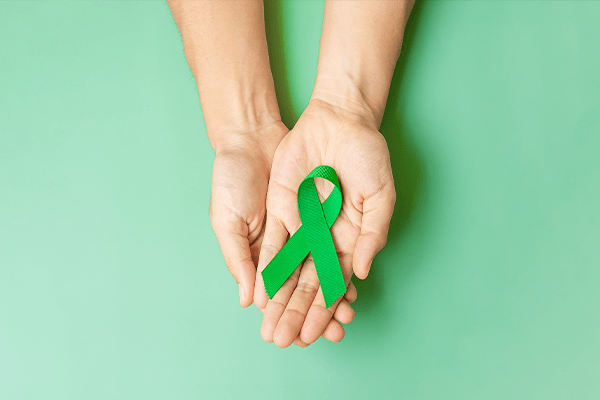Lymphoma: When White Blood Cells Turn Odd

Az Zahra Putri Dania, Indonesia's top female badminton player, died of lymphoma—often known as lymph node cancer—a few years ago. Lymphoma cancer is the sixth most common cancer in Indonesia, and its prevalence is rising.
White blood cells fight various pathogens that cause infection as one of its tasks in the body. White blood cell levels in adults are normally around 4,500-10,000 cells/mm3, but for a variety of causes, white blood cells can increase uncontrollably in lymph nodes or organs that manufacture white blood cells.
This malignant transformation of white blood cells causes the genesis of a type of cancer known as lymphoma cancer or lymph node cancer. Non-Hodgkin lymphoma (NHL) and Hodgkin lymphoma (HL) are the two forms of lymphoma malignancy. NHL is commonly diagnosed in people with lymphoma. HL instances are uncommon in Indonesia, and the number is declining year after year, in contrast to NHL, which is increasing.
NHL symptoms are not specific and vary from person to person; thus, the symptoms that develop are not the same. Swollen lymph nodes that are often painless, solid, and immobile in the armpits, neck, face, or groin are common symptoms. Even if you recognize these signs and symptoms, please never self-diagnose.

If you discover a lump in that location, see a doctor immediately.
Aside from the lump, other symptoms include persistent fever, weight loss for no apparent reason, loss of appetite, increased sweating (especially at night), susceptibility to infection, skin itching, pain, a swollen stomach, coughing, and shortness of breath.
The doctor will analyze a sample of lymph node tissue (a biopsy) to make a diagnosis. Reed-Sternberg cells, which are aberrant B lymphocyte cells that develop into cancer cells, are detected in HL but not in NHL. NHL is typically caused by aberrant B or T cell proliferation. NHL is also a kind of mantle-cell lymphoma.
NHL requires attention because it is associated with the immune system. Various medications damage the immune system over time. Other problems caused by chemotherapy medications include heart disease, hormone issues, infertility, and secondary malignancies such as leukemia. This cancer, after all, is what causes NHL patients to die.
What was the cause?
The cause of the NHL is yet unknown. The life cycle of lymphocytes is predictable: old lymphocytes die, and the body produces new lymphocytes to replace them. But instead of dying, old lymphocytes in NHL cancer continue to create new ones.
As a result, the body produces an abundance of new lymphocytes, which accumulate in the lymph nodes. This is what causes lymph nodes, spleen, and liver swelling.
Meanwhile, various risk factors for lymphoma cancer exist. Among them are:
- Age: Lymphoma cancer is most commonly diagnosed in adults over the age of 55.
- Men: Men are more likely than women to be diagnosed with lymphoma cancer.
- Vulnerable immune system: This is common in those who have immune system issues.
- Exposed to certain radiation.
- Excessive intake of meat, fat, milk, and derivatives of these foods.
Treatment

Although chemotherapy or radiotherapy are commonly used to treat NHL, some patients may not require immediate treatment.
Treatment and treatment strategies for lymphoma cancer fluctuate depending on health and age in general. If NHL develops slowly, your doctor would normally advise you to watch, wait, and monitor your status on a frequent basis. If the condition worsens, your doctor may recommend the following steps:
1. Chemotherapy
Chemotherapy involves the use of chemicals to kill cancer cells. It can be used alone or in combination with biological therapy and radiation.
2. High-dose chemotherapy
If the first therapy does not work, this one is given. Unfortunately, high-dose chemotherapy can harm the spinal cord. Sufferers require a stem cell transplant to restore damaged spinal cords.
3. Radiotherapy
Most commonly used in the early stages of NHL, when the malignancy is only in one area of the body and given for no more than three weeks. Radiotherapy is painless, but it has substantial adverse effects.
It depends on whatever portion of the body is being treated. In the long run, it can result in infertility or permanent skin blackening.
4. Monoclonal antibody treat
This is one type of treatment used by NHL patients. These treatments bind to both healthy and malignant cells, signaling the immune system to attack and destroy them.
This treatment, when paired with chemotherapy, lasts around two years after the initial treatment. Rituximab is one of the monoclonal antibody medicines given in the form of injections directly into the vein for several hours.
5. Steroid medication
It is combined with chemotherapy. Several studies have demonstrated that using steroids increases the effectiveness of chemotherapy while decreasing negative effects. The medicine is administered in tablet or injection form in conjunction with chemotherapy and is administered for a few days to a week during each chemotherapy cycle.
Nausea and vomiting, diarrhea, lack of appetite, canker sores, skin rashes, and hair loss are all possible side effects of treatment. Because of decreased appetite, these adverse effects might lead to malnutrition, since food intake declines.
If you are having treatment, you should concentrate on eating nutritious and calorie-dense meals like eggs, nuts, and whole grains. You should also stay hydrated.
Meanwhile, you should avoid foods like animal fat, sugar (especially added sugar), and refined grains (such as white bread and rice).
In the early stages of lymphoma cancer, there are frequently no symptoms.



